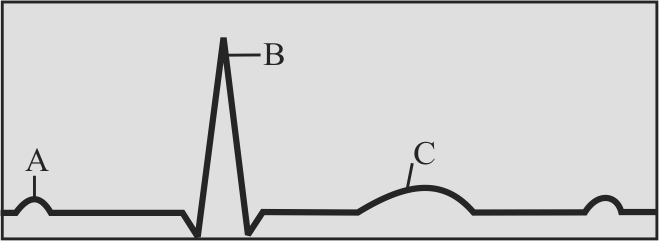339372
Match Column I with Column II :
Choose the correct answer from the options given below :
Column I
Column II
A
P wave
P
Heart muscles are electrically silent
B
QRS complex
Q
Depolarisation of ventricles
C
T wave
R
Depolarisation of atria
D
T - P gap
S
Repolarisation of ventricles
339372
Match Column I with Column II :
Choose the correct answer from the options given below :
Column I
Column II
A
P wave
P
Heart muscles are electrically silent
B
QRS complex
Q
Depolarisation of ventricles
C
T wave
R
Depolarisation of atria
D
T - P gap
S
Repolarisation of ventricles
339372
Match Column I with Column II :
Choose the correct answer from the options given below :
Column I
Column II
A
P wave
P
Heart muscles are electrically silent
B
QRS complex
Q
Depolarisation of ventricles
C
T wave
R
Depolarisation of atria
D
T - P gap
S
Repolarisation of ventricles
339372
Match Column I with Column II :
Choose the correct answer from the options given below :
Column I
Column II
A
P wave
P
Heart muscles are electrically silent
B
QRS complex
Q
Depolarisation of ventricles
C
T wave
R
Depolarisation of atria
D
T - P gap
S
Repolarisation of ventricles
